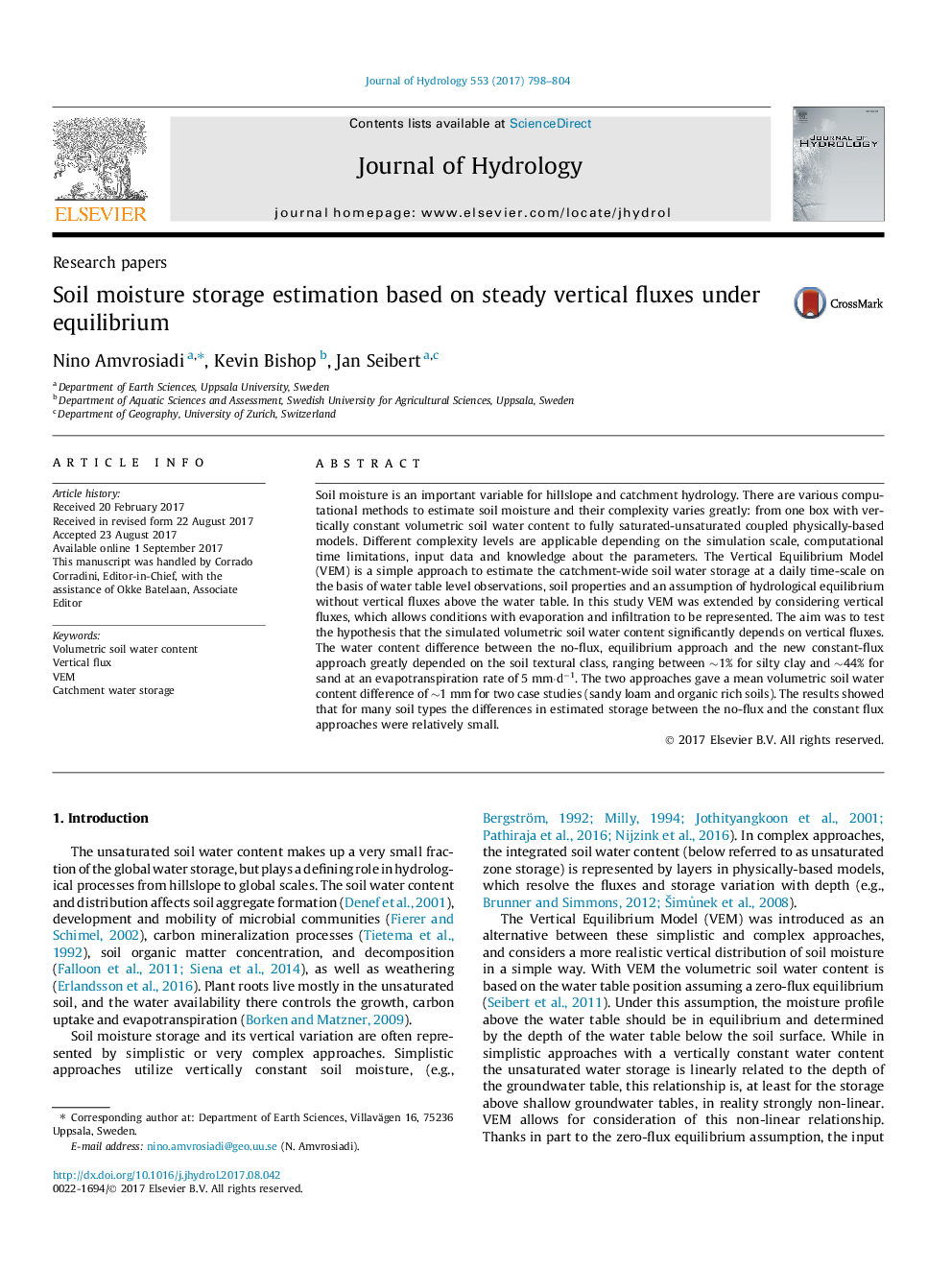| Article ID | Journal | Published Year | Pages | File Type |
|---|---|---|---|---|
| 5770856 | Journal of Hydrology | 2017 | 7 Pages |
â¢We extended Vertical Equilibrium Model (VEM0) to consider steady state fluxes (VEMF).â¢Water content difference between VEM0 and VEMF (Wdiff) was quantified.â¢Wdiff was significant for some soil types and higher net vertical flux rates.â¢Wdiff was negligible for a case study with shallow water table levels.
Soil moisture is an important variable for hillslope and catchment hydrology. There are various computational methods to estimate soil moisture and their complexity varies greatly: from one box with vertically constant volumetric soil water content to fully saturated-unsaturated coupled physically-based models. Different complexity levels are applicable depending on the simulation scale, computational time limitations, input data and knowledge about the parameters. The Vertical Equilibrium Model (VEM) is a simple approach to estimate the catchment-wide soil water storage at a daily time-scale on the basis of water table level observations, soil properties and an assumption of hydrological equilibrium without vertical fluxes above the water table. In this study VEM was extended by considering vertical fluxes, which allows conditions with evaporation and infiltration to be represented. The aim was to test the hypothesis that the simulated volumetric soil water content significantly depends on vertical fluxes. The water content difference between the no-flux, equilibrium approach and the new constant-flux approach greatly depended on the soil textural class, ranging between â¼1% for silty clay and â¼44% for sand at an evapotranspiration rate of 5 mm·dâ1. The two approaches gave a mean volumetric soil water content difference of â¼1 mm for two case studies (sandy loam and organic rich soils). The results showed that for many soil types the differences in estimated storage between the no-flux and the constant flux approaches were relatively small.
